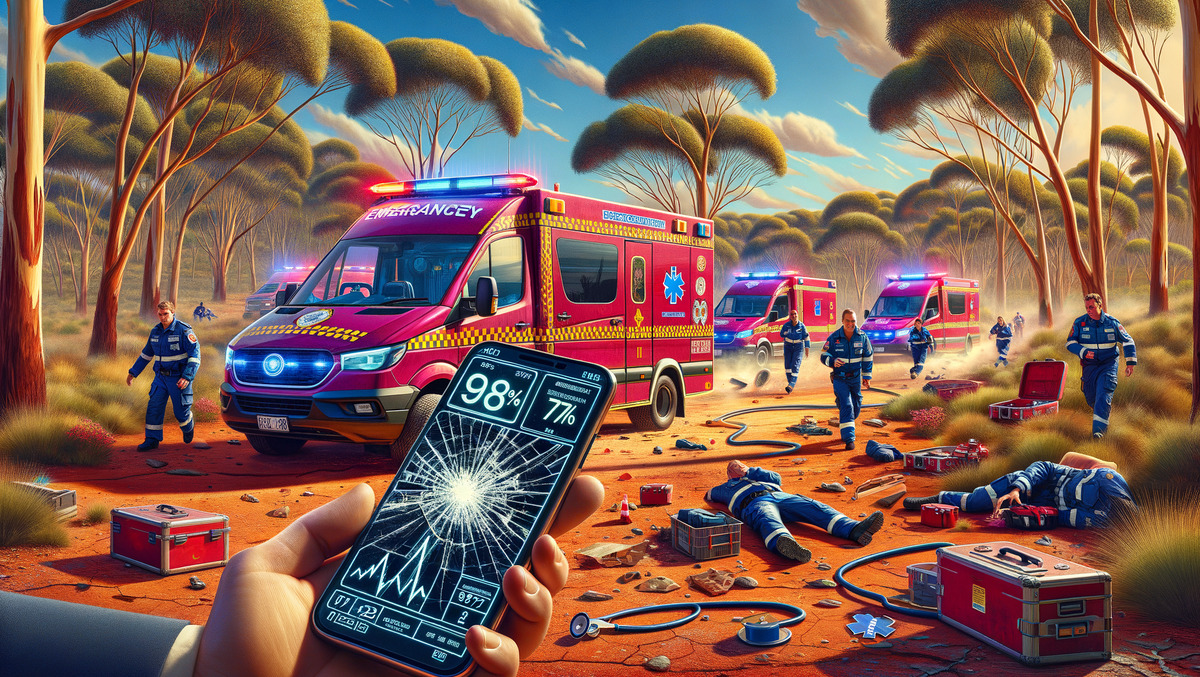Australian emergency services struggle with mobile tech failures

- by Admin
- April 26, 2024

A recent report by SOTI titled “Digitizing the Frontline: Transformative Technologies in Critical Care”, states that 97% of Australian emergency service teams are grappling with severe mobile technology challenges. These problems range from device downtime to delayed data access, issues that serve as significant barriers, slowing down and compromising the quality of emergency responses.
The report throws a spotlight on the serious consequences of obsolete technologies on life-saving services in Australia, a country commonly hit by devastating natural disasters. Shockingly, 75% of first responders reported that they had, on occasions, needed to provide reduced or delayed care due to mobile device failures.
In Australia’s vast and challenging terrain, often disrupted by natural challenges such as bushfires and floods, the role of technology in emergency services cannot be overstated. The report, however, reveals that 97% of first responders encounter issues with their mobile devices. This statistic underscores the urgent need for technological innovation in the sector. The gravity of the need is underlined by Australia’s unique environmental challenges which render reliable communication and device accessibility not only beneficial but crucial for successful emergency management.
The SOTI report stresses the importance of technology’s role in front-line response, revealing operational challenges and areas for improvement. Issues like device downtime, delayed collaboration and reporting all point to an ongoing need for digitisation. Enhanced device management and remote device support are also emphasized as critical requirements for emergency services.
The report also illustrates several basic technology failures that emergency service teams cannot afford. A heavy 75% of emergency service workers posited that they have experienced times when the care they provided was compromised or delayed due to issues with mobile devices. Issues such as delays in accessing digital records (45%) due to apps/web apps not working and 27% faced delays in receiving data for location details. Worryingly, 70% reported that resolving mobile device issues takes up to 30 minutes, a significant effect during crucial moments when swift decision-making can make the difference between life and death.
Michael Dyson, VP for Sales, APAC at SOTI, declared, “In the aftermath of disastrous bushfires and floods, there is an urgent need to bridge the technological gaps in Australia’s emergency service sector. These events exacerbate the consequences of delays in emergency response caused by inadequate mobile device technology. Implementation of a comprehensive EMM solution is a critical measure for improving operational efficiencies and response capabilities.”
Dyson went on to add: “The transition from manual, paper-based methods to digital systems is critical in enhancing operational capabilities where every second counts. The recent incident in Victoria, Australia, where emergency services took more than two hours to locate a woman in a wheelchair inside a burning house due to reliance on printed maps, underscores the pressing need for improved device management and capabilities within our emergency services sector.”
The report also discovered that 52% of Australian front-line workers still rely on traditional pen and paper methods, which poses significant risks such as loss of information, obsolescence and susceptibility to human errors. Furthermore, 43% of emergency service workers claimed that the issues they experience with devices resulted in increased stress levels for them and their teams.
The Latest News
-
November 23, 2024Smith fires, Herbert in LIV mode as Aussie PGA heats up
-
November 23, 2024‘My story’s still not done’: Joel Dahmen drains ticklish putt to make cut at RSM, keeps hopes alive of retaining tour card – Australian Golf Digest
-
November 23, 2024Australian PGA 2024: LIV Golf’s 54-hole starts good prep for rain-shortened event, says Herbert – Australian Golf Digest
-
November 23, 2024Australia v India: first men’s Test, day two – live
-
November 23, 2024Live Test updates: Indian speedsters continue rout of Australia as Bumrah takes five





